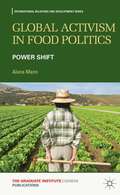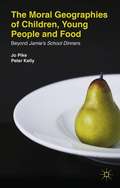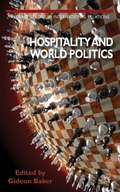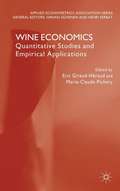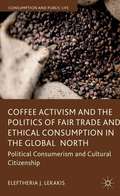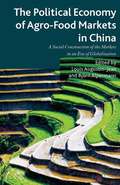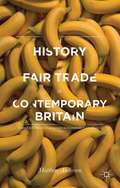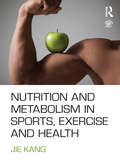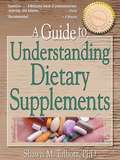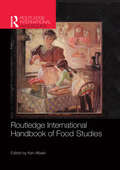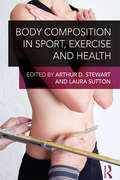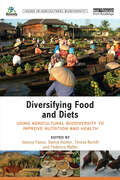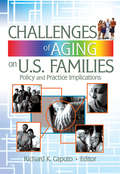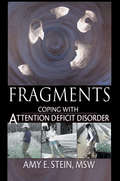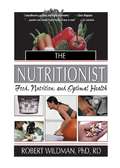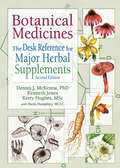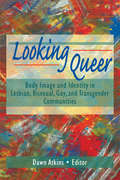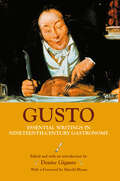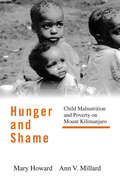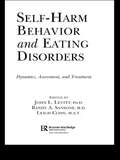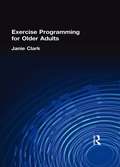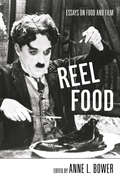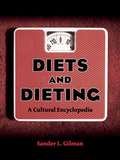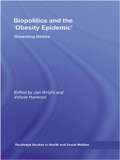- Table View
- List View
Global Activism in Food Politics
by Alana MannWho should provide food, and through what relationships? Whose livelihoods should be protected? For over 20 years the peasant farmers of La Via Campesina have been engaged in the fight against injustice, hunger and poverty under the banner of food sovereignty, 'the right of peoples to healthy and culturally appropriate food produced through ecologically sound and sustainable methods, and their right to define their own food and agriculture systems'. They campaign for healthy, sustainable alternatives to an industrial food system controlled by agribusiness companies and the architects of unfair trade agreements. This book draws on grounded case studies of agrarian movements in the Americas and Europe as exemplars of a 'power shift,' as local opposition scales up to global action in an effort to wrest control of our food away from transnational corporations and back to communities.
The Moral Geographies of Children, Young People and Food
by Jo Pike Peter KellyThis book takes Jamie Oliver's campaign for better school meals as a starting point for thinking about morally charged concerns relating to young people's nutrition, health and well-being, parenting, and public health 'crises' such as obesity. The authors show how these debates are always about the moral project of the self.
Hospitality and World Politics
by Gideon BakerA long neglected concept in the field of international relations and political theory, hospitality provides a new framework for analysing many of the challenges in world politics today, from the search for peaceable relations between states to asylum and refugee crises.
Wine Economics
by Eric Giraud-Héraud Marie-Claude PicheryThe book proposes an overview of the research conducted to date in the field of wine economics. All of these contributions have in common the use of econometric techniques and mathematical formalization to describe the new challenges of this economic sector.
Coffee Activism and the Politics of Fair Trade and Ethical Consumption in the Global North: Political Consumerism and Cultural Citizenship
by Eleftheria J. LekakisThis book explores the politics borne of consumption through the case of coffee activism and ethical consumption. It analyses the agencies, structures, repertoires and technologies of promotion and participation in the politics of fair trade consumption through an exploration of the relationship between activism and consumption.
The Political Economy of Agro-Food Markets in China
by Louis Augustin-Jean Björn AlpermannChina's agricultural production and food consumption have increased tremendously, leading to a complete evolution of agro-food markets. The book is divided into two parts; the first part reviews the theoretical framework for the 'social construction of the markets,' while the second part presents the implication for the agro-food markets in China.
A History of Fair Trade in Contemporary Britain: From Civil Society Campaigns To Corporate Compliance
by Matthew AndersonThis book offers an original contribution to the empirical knowledge of the development of Fair Trade that goes beyond the anecdotal accounts to challenge and analyse the trading practices that shaped the Fair Trade model. Fair Trade represented a new approach to global trade, corporate social responsibility and consumer politics.
Ecofeminist Approaches to Early Modernity
by Jennifer Munroe Rebecca LarocheChallenges the notion of how early modern women may or may not have spoken for (or even with) nature. By focusing on various forms of 'dialogue,' these essays shift our interest away from speaking and toward listening, to illuminate ways that early modern Englishwomen interacted with their natural surroundings.
Nutrition and Metabolism in Sports, Exercise and Health
by Jie KangA key determinant of successful athletic performance is the high-level energy transformation which begins with combustion of the food that we eat. By developing a sound understanding of good nutrition we can improve athletic performance, help maintain good health and prevent disease. This clear and comprehensive introduction to nutrition in sport, exercise and health goes further than any other textbook in integrating key nutritional facts, concepts and dietary guidelines with a thorough discussion of the fundamental biological science underpinning our physiological and metabolic processes. By clearly explaining how nutrients function within our biological system, the book helps students to develop a better understanding of the underlying mechanisms, which, in turn, will help the student to apply their knowledge in practice. The book includes in depth discussion of key contemporary topics within nutrition including: nutrient bioenergetics nutrition and metabolic disease nutritional ergogenic aids nutrition for special populations nutritional assessment. Each chapter includes useful pedagogical features, including case studies, review questions, definitions of key terms, and practical laboratory exercises – such as techniques for assessing nutritional status, body composition and physical activity patterns. A companion website offers additional teaching and learning features, such as PowerPoint slides, multiple-choice question banks and web links. As the most up-to-date introduction to sport and exercise nutrition currently available, this book is essential reading for all students of sport and exercise science, kinesiology, physical therapy, nutrition, dietetics or health sciences. Visit the companion website at www.routledge.com/cw/kang
A Guide to Understanding Dietary Supplements (Nutrition, Exercise, Sports, And Health Ser.)
by Shawn M TalbottWritten by one of the foremost experts on sports nutrition and performance, A Guide to Understanding Dietary Supplements takes a critical look at the dietary supplement industry. With an estimated 60 percent of adult Americans using dietary supplements every day, the need for a thorough examination of the hundreds of products on the market is long overdue. This comprehensive guide (Selected as an Outstanding Academic Title by Choice Magazine) presents straightforward analysis from a consumer's perspective, giving you the facts on more than 140 supplements and information on which supplements work (and which don't!) for a wide range of health conditions-from preventing cancer and heart disease to fighting diabetes and depression.United States Department of Agriculture surveys show that more than 70 percent of Americans fail to achieve daily recommended levels for many vitamins and minerals. With today's emphasis on fitness, millions are investing their money and health in quick-fix solutions-supplements promoted as cure-alls to right nutritional wrongs, lower the likelihood of disease, and work dietary miracles. A Guide to Understanding Dietary Supplements presents a more realistic view of supplements as neither miracle cure nor nutritional sham, but as consumer products to be accepted or rejected based on scientific fact, not fitness fantasy.A Guide to Understanding Dietary Supplements looks at the pros and cons of dietary supplements in the areas of: weight loss bones and joints energy, brain, and mood heart, eye, and gastrointestinal health male and female health cancer, diabetes, and the immune system sports and ergogenic aidsIn addition, the book presents an overview of the dietary supplement industry and the regulations that govern it and looks at the process for developing new products. Designed to cut through the confusion surrounding dietary supplements, A Guide to Understanding Dietary Supplemens is an invaluable resource for students, educators and professionals who deal with nutrition, exercise, physical education, nursing, and anyone else interested in health and fitness.
Routledge International Handbook of Food Studies (Routledge International Handbooks)
by Ken AlbalaOver the past decade there has been a remarkable flowering of interest in food and nutrition, both within the popular media and in academia. Scholars are increasingly using foodways, food systems and eating habits as a new unit of analysis within their own disciplines, and students are rushing into classes and formal degree programs focused on food. Introduced by the editor and including original articles by over thirty leading food scholars from around the world, the Routledge International Handbook of Food Studies offers students, scholars and all those interested in food-related research a one-stop, easy-to-use reference guide. Each article includes a brief history of food research within a discipline or on a particular topic, a discussion of research methodologies and ideological or theoretical positions, resources for research, including archives, grants and fellowship opportunities, as well as suggestions for further study. Each entry also explains the logistics of succeeding as a student and professional in food studies. This clear, direct Handbook will appeal to those hoping to start a career in academic food studies as well as those hoping to shift their research to a food-related project. Strongly interdisciplinary, this work will be of interest to students and scholars throughout the social sciences and humanities.
Body Composition in Sport, Exercise and Health
by D. Stewart Laura SuttonThe analysis of body composition (fat, bone and muscle) is an important process throughout the biomedical sciences. This is the first book to offer a clear and detailed introduction to the key methods and techniques in body composition analysis and to explain the importance of body composition data in the context of sport, exercise and health. With contributions from some of the world’s leading body composition specialists, the book goes further than any other in demonstrating the practical and applied value of body composition analysis in areas such as performance sport and weight control in clinical populations. The book pays particular attention to the important concept of change in body composition, and includes discussion of ethical issues in the collection, interpretation and presentation of data, and considerations when working with special populations. Bridging the gap between research methods and practical application, this book is important reading for advanced students and practitioners working in sport and exercise science, health science, anatomy, nutrition, physical therapy or ergonomics.
Diversifying Food and Diets: Using Agricultural Biodiversity to Improve Nutrition and Health (Issues in Agricultural Biodiversity)
by Danny Hunter Federico Mattei Jessica Fanzo Teresa BorelliCurrently 868 million people are undernourished and 195 million children under five years of age are stunted. At the same time, over 1 billion people are overweight and obese in both the developed and developing world. Diseases previously associated with affluence, such as cancer, diabetes and cardio-vascular disease, are on the rise. Food system-based approaches to addressing these problems that could enhance food availability and diet quality through local production and agricultural biodiversity often fall outside the traditional scope of nutrition, and have been under-researched. As a consequence, there remains insufficient evidence to support well-defined, scalable agricultural biodiversity interventions that can be linked to improvements in nutrition outcomes. Agricultural biodiversity is important for food and nutritional security, as a safeguard against hunger, a source of nutrients for improved dietary diversity and quality, and strengthening local food systems and environmental sustainability. This book explores the current state of knowledge on the role of agricultural biodiversity in improving diets, nutrition and food security. Using examples and case studies from around the globe, the book explores current strategies for improving nutrition and diets and identifies key research and implementation gaps that need to be addressed to successfully promote the better use of agricultural biodiversity for rural and urban populations and societies in transition.
Challenges of Aging on U.S. Families: Policy and Practice Implications
by Richard K Caputo Gary W Peterson Suzanne SteinmetzExamine the changing structure of the family as America&’s population ages!As the United States&’ economy evolves and manufacturing jobs disappear, the prospect of each generation experiencing a standard of living that exceeds that of their parents&’ generation also disappears. Challenges of Aging on U.S. Families: Policy and Practice Implications explores this trend, presenting the latest original research on the changing roles of caregivers along with the economic and emotional effects on the family unit. Respected authorities discuss in detail long-term care and the standard of living of families, with a focus on the effects of changing family structures on families themselves and society at large. The coming boom in the population of the aging will impact families at several levels. Challenges of Aging on U.S. Families thoroughly examines the economic demands of aging on families, then focuses on different roles elderly family members are likely to play over the next several decades. Some of the issues explored include "skipped generation parenting" where children are raised in grandparent homes where neither parent is present, the impending economic impact of caregiving on families, the stress on families with fewer siblings to share the caregiving tasks, and the tendency for family members to live in different parts of the country and subsequently become unable to offer caregiver support. Detailed tables provide clarity of thought while comprehensive bibliographies offer further opportunity for study.Challenges of Aging on U.S. Families discusses: the economics of aging the implications of aging economics and emotional stress on the future of families the coming labor shortage of caregivers family-based intervention in residential long-term care shifting relationships between parents and their children caregivers self-esteem issues involving daughter caregivers paying family caregivers-as public policy a proposed policy of requiring adult children to care for their aging parents inheritance and intergenerational transmission of parental care the inherent psychological stress within skipped generation familiesChallenges of Aging on U.S. Families: Policy and Practice Implications is an eye-opening text for researchers, health professionals, social workers, counselors, caregivers, educators, and students.
Fragments: Coping with Attention Deficit Disorder
by Amy E SteinExplore effective alternative approaches to improving the lives of those diagnosed with attention deficit disorder!This remarkable new book offers fresh perspectives on ADD/ADHD. Even more important, it provides new direction for sufferers, introducing an ecologically based lifestyle that focuses on hands-on interactive learning. Fragments: Coping with Attention Deficit Disorder shows how to use environmental education and activities such as organic farming, community service, mission work, art, yoga, meditation, and spirituality to bring about positive change in people diagnosed with ADD or ADHD.From author Amy E. Stein: “This book is about life. It is written for those who think they have no hope, who struggle with life, with decisions, with addiction, and in search of themselves. I do not believe traditional psychotherapy or medication are solutions for those of us who fall under the label of ADD or ADHD.”Candidly written by a woman who, at age 25, was diagnosed as “a textbook case for attention deficit hyperactivity disorder,” this insightful book examines: the pitfalls of traditional psychotherapy and medication for those diagnosed with ADD/ADHD how an interactive hands-on learning environment can markedly improve the educational experience of ADD/ADHD kids how an organic, holistic approach can benefit those diagnosed with ADD/ADHD the correlation between agriculture and ADD/ADHD and the impact of eliminating pesticides and increasing fatty acid intake in the diets of sufferers how incorporating spirituality and faith into ADD/ADHD sufferers&’ lives can help to add discipline and bring greater satisfaction and much more!Five helpful appendices give you easy access to environmental education resources, agricultural resources, a sample agricultural curriculum, a sample ecology curriculum, and an environmental art curriculum.
The Nutritionist: Food, Nutrition, and Optimal Health
by Robert WildmanUse this valuable book to make better food/diet/nutrition supplement choices for your clients (and yourself)!The Nutritionist provides an overview of the basic concepts involved in nourishing the human body in an organized and progressive first-person question-and-answer format. Its eminently readable style and easy-to-understand graphics will enhance your comprehension of applied nutrition topics such as energy nutrients, vitamins, and minerals as well as energy metabolism and body composition, exercise, heart disease, and cancers.Healthcare professionals, personal trainers, nutritionists, and lay readers will all find valuable, easily understood information in The Nutritionist. The book lays the foundation with a review of the basic concepts of body composition and related scientific concepts, which are invaluable in understanding the nutrition information that follows. It examines molecules, chemical reactions, energy, acids and bases (pH), free radicals and oxidation, and water solubility. With this foundation, concepts such as lipoproteins (LDL, HDL, blood cholesterol), antioxidants, energy, metabolism, body composition, exercise, heart disease, and cancer are easily understandable.This unique book’s first-person, question-and-answer style brings you quick access to current information about nutrition and: energy metabolism energy nutrients weight control body composition exercise vitamins and minerals nutrition supplements osteoporosis diabetes mellitus heart disease cancer and more!The Nutritionist provides straightforward answers to basic questions about the body and how to nourish it. Use it to make better choices for your clients and to help them reach the performance and health goals they set.
Botanical Medicines: The Desk Reference for Major Herbal Supplements, Second Edition
by Dennis J Mckenna Kenneth Jones Kerry Hughes Virginia M TylerAnswer patients’questions about botanical supplements quickly and easily!This informative book is a compendium of detailed scientific research on 34 of the most popular dietary supplements used in North America and Europe. Its coverage of pharmacological studies on the main medicinal plants used in clinical practice and sold in pharmacies in the Western world is more extensive than any other publication of monographic reviews available. The way Botanical Medicines: The Desk Reference for Major Herbal Supplements, Second Edition. is organized (standardized topic formats are used in each monograph) makes it easy for you to locate relevant information quickly and to compare corresponding sections between different entries. This book is an invaluable tool for pharmacists, physicians, and other health care professionals who need detailed, scientifically accurate information on appropriate use, safety, dosages, and similar issues related to botanical dietary supplements.Each entry in Botanical Medicines: The Desk Reference for Major Herbal Supplements, Second Edition. covers botanical data (classification and nomenclature, common names, geographic occurrence, and botanical characteristics), plus: history and traditional uses chemistry therapeutic applications pre-clinical studies clinical studies recommended dosages safety profiles (including toxicology) side effects and contraindications drug interactions and special precautions safety recommendations during pregnancy and lactationThis extensively referenced volume includes appendixes with information on the major provisions of DSHEA (the Dietary Supplement Health and Education Act of 1994) and on the criteria and procedures for assessing the quality of botanical products.
Looking Queer: Body Image and Identity in Lesbian, Bisexual, Gay, and Transgender Communities
by Dawn AtkinsLooking Queer: Body Image in Lesbian, Bisexual, Gay, and Transgender Communities contains research, firsthand accounts, poetry, theory, and journalistic essays that address and outline the special needs of sexual minorities when dealing with eating disorders and appearance obsession. Looking Queer will give members of these communities hope, insight, and information into body image issues, helping you to accept and to love your body. In addition, scholars, health care professionals, and body image activists will not only learn about queer experiences and identity and how they affect individuals, but will also understand how some of the issues involved affect society as a whole. Dismantling the myth that body image issues affect only heterosexual women, Looking Queer explores body issues based on gender, race, class, age, and disability. Furthermore, this groundbreaking book attests to the struggles, pain, and triumph of queer people in an open and comprehensive manner. More than 60 contributors provide their knowledge and personal experiences in dealing with body image issues exclusive to the gay and transgender communities, including: exploring and breaking down the categories of gender and sexuality that are found in many body image issues finding ways to heal yourself and your community discovering what it means to “look like a dyke” or to “look gay” fearing fat as a sign of femininity determining what race has to do with the gay ideal discussing the stereotyped ”double negative”--being a fat lesbian learning strategies of resistance to societal ideals critiquing ”the culture of desire” within gay men’s communities that emphasizes looks above everything elseRevealing new and complex dimensions to body image issues, Looking Queer not only discusses the struggles and hardships of gay, lesbian, bisexual, and transgendered persons, but looks at the processes that can lead to acceptance of oneself. Written by both men and women, the topics and research in Looking Queer offer insight into the lives of people you can relate to, enabling you to learn from their experiences so you, too, can find joy and happiness in accepting your body.Visit Dawn Atkin’s website at: http://home.earthlink.net/~dawn_atkins/
Gusto: Essential Writings in Nineteenth-Century Gastronomy
by Denise GiganteFirst published in 2006. Routledge is an imprint of Taylor & Francis, an informa company.
Hunger and Shame: Child Malnutrition and Poverty on Mount Kilimanjaro
by Mary Howard Ann V. MillardIn discussing the moral and practical dilemmas posed by the malnourished children in Mount Kilimanjaro, the authors explore the shame associated with child hunger in relation to social organization, colonial history and global economy.
Self-Harm Behavior and Eating Disorders: Dynamics, Assessment, and Treatment
by John L. Levitt Ph. D. Randy A. Sansone Leigh Cohn M. A. T.The number of eating disorders patients presenting with symptoms of self-harm is growing quickly, and yet there is surprisingly little known about this unique population. Self-Harm Behavior and Eating Disorders explores the prevalent but largely uncharted relationship between self-injury behaviors and eating disorders symptoms. In the first major book to focus on this area, a renowned group of international scholars and practitioners addresses the subject from a variety of theoretical and practical perspectives. The book is categorized into sections covering epidemiology, psychodynamics, assessment, and a final section covering potential treatment options, including dialectical behavioral therapy, cognitive therapy, interventions strategies, group therapy, and pharmacological approaches. This unrivaled collection of case studies, theoretical exploration, and practical application forms a benchmark for the field, and offers a stepping-stone for new research and innovative treatment strategies. In an area with little available information, previously spread out among diffuse sources, this volume represents the state-of-the-field resource for anyone working with complex eating disorders patients.
Exercise Programming for Older Adults
by Janie ClarkThe exercise programming guidelines provided in this book focus on functional fitness training and safety and demonstrate how physical activities supervised by activities personnel can strongly benefit participants’quality of life. Exercise Programming for Older Adults guarantees that exercise programming attains a balance between the three major physical components--aerobic, strength, and flexibility training--and that each component is properly administered. The techniques and applications described are geared toward those with prevalent conditions of aging such as arthritis, osteoporosis, joint replacement, cardiovascular disease, stroke, and chronic obstructive pulmonary disease.This essential handbook arms the reader with a multidisciplinary approach to exercise management for elderly populations. The chapter authors are experts from the fields of fitness instruction, nursing, physical therapy, medicine, research, and exercise physiology. As they address the theory and practice of providing sound exercise programming, specific exercises are described and illustrated, with emphasis on functional fitness outcomes, safety precautions, fall prevention, and practical adaptations for low-fit and physically limited participants. Chapter discussions include:aerobic exercisestrength trainingflexibility trainingthe administration of mild posture and breathing exercises for debilitated individuals with poor prognosespositioning and transfer techniques essential for optimal activities management of neurologically impaired patientswarm water exercise programs designed for persons with low tolerance of conventional training methodsExercise Programming for Older Adults serves as a vital resource for activity coordinators in long-term care settings and for group fitness instructors and personal trainers who serve older adult and frail elderly clientele. Readers will discover alternative techniques and applications for maximizing the physical and mental therapeutic benefits of exercise and developing the functional fitness of even the most physically challenged participants.
Reel Food: Essays on Food and Film
by Anne L. BowerFirst published in 2005. Routledge is an imprint of Taylor & Francis, an informa company.
Diets and Dieting: A Cultural Encyclopedia
by Sander L. GilmanDiets and dieting have concerned – and sometimes obsessed – human societies for centuries. The dieters' regime is about many things, among them the control of weight and the body, the politics of beauty, discipline and even self-harm, personal and societal demands for improved health, spiritual harmony with the universe, and ethical codes of existence. In this innovative reference work that spans many periods and cultures, the acclaimed cultural and medical historian Sander L. Gilman lays out the history of diets and dieting in a fascinating series of articles.
Biopolitics and the 'Obesity Epidemic': Governing Bodies (Routledge Studies in Health and Social Welfare)
by Jan Wright Valerie HarwoodBiopolitics and the ‘Obesity Epidemic’ is the first edited collection of critical perspectives on the 'obesity epidemic.' The volume provides a comprehensive discussion of current issues in the critical analysis of health, obesity and society, and the impact of obesity discourses on different individuals, social groups and institutions. Contributors from the UK, Canada, New Zealand and Australia provide original, accessible, and engaging chapters on issues such as the effects on individuals, families, youths and schools. The timely contributions offered by Biopolitics and the ‘Obesity Epidemic’ to this highly topical area will be of interest to a wide range of readers, including teachers, education professionals, community health and allied professionals, and academics in areas such as education, health, youth studies, social work and psychology.
